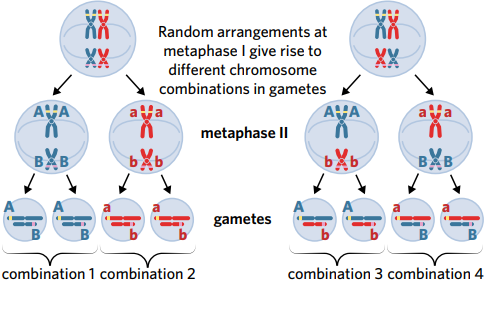Meiosis I (12222)
0.0(0)
Card Sorting
1/8
There's no tags or description
Looks like no tags are added yet.
Study Analytics
Name | Mastery | Learn | Test | Matching | Spaced |
|---|
No study sessions yet.
9 Terms
1
New cards
Interphase (1)
1. cell grows and duplicates all of its chromosomes in preparation for division.

2
New cards
Prophase I (2)
1. nuclear membrane breaks down. 2. chromosomes condense and line up in homologous pairs (this is important for crossing over).

3
New cards
Metaphase I (2)
1. homologous chromosomes line up randomly on opposite sides of the metaphase plate/equator, with one copy (paternal or maternal) on either side. 2. each chromosome is attached to the microtubules of whichever pole is closest.
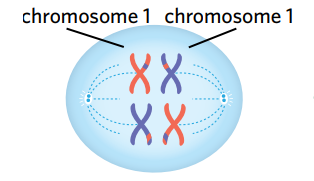
4
New cards
Anaphase I (2)
1. the homologous chromosomes are moved apart towards opposite poles of the cell. 2. however, sister chromatids remain attached to one another at the centromere.
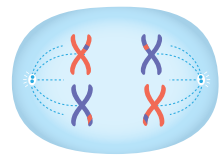
5
New cards
Telophase I (2)
1. the chromosomes arrive at opposite ends of the cell as the nuclear membrane is cleaved. 2. a cleavage furrow forms in preparation for cytokinesis.
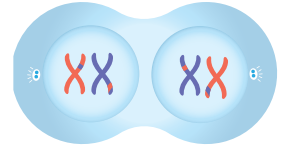
6
New cards
Crossing over
The exchanging of genetic material from one homologue to the other during prophase I. The homologous chromosomes will ‘cross over’ at a point called the chiasma, each swapping part of their DNA with the other.
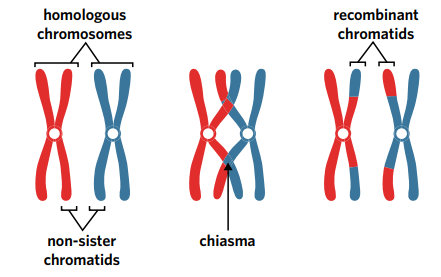
7
New cards
Independent assortment
The random orientation of homologous chromosomes along the metaphase plate during metaphase I. Each pair of homologues line up randomly, irrespective of the orientation of other homologous pairs.

8
New cards
Why is Crossing Over important for genetic diversity?
1. results in the formation of new recombinant chromatids each with its own unique combinantion of alleles. 2. this adds to the genetic diversity of the haploid daughter cells as the sister chromatids that they will inherit are no longer identical.
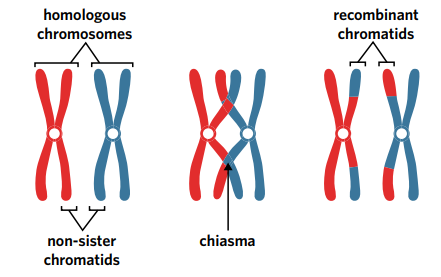
9
New cards
Why is Independent Assortment important for genetic diversity?
1. pairs of homologous chromosomes line up on opposite sides of the metaphase plate. 2. the resulting combinantion of alleles in each daughter cell is randomised since what is inherited depends on which side of the metaphase plate each chromosome is positioned.
